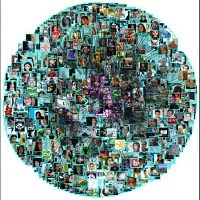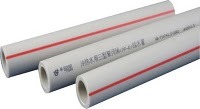It has taken me 12 years of teaching to return to some of the educational theories that I was supposed to learn at college. Twelve years of being very busy, very earnest, doing lots of good stuff, but sometimes completely missing the point. When I did return to those theories I found there was a new one that hadn’t existed when I was first at college.
What educational theories sit behind ‘networks’ and the act of ‘networking’? Behaviourism? Cognitivism? Constuctivism? – Answer: all of the above.
Connectivism is what you’re doing right now if you’re reading this. You’ll find yourself on the third and fourth bullet point of George Siemens’ blog about what connectivism is. I’m glad I found it.
George Siemens’ paper helped describe the kind of teacher I am becoming when I was searching for some material to help me present at a conference a few weeks ago. It helped me connect the inspiration I had received from Ewan McIntosh to be a ‘literate’ teacher with the networks I had begun through Creative Partnerships’ Bright Space and their agent Marcus Belben alongside the BXL technology tree project and partners Frankley CLC and Stan’s Cafe to be first primary school to do Scalextric4Schools. Apologies for the number of ‘ands‘ in that sentence.
There are two things that stand out to me from the aformentioned paper:
The first is: Karen Stephenson’s“Quantum Theory of Trust”. This is essentially that networks can only work successfully when everyone can trust each other. Trust between the partners I have worked with has been essential this year.
I have found that there is a trust too between the participants of the Google Teacher Academy – we trust that we want the same thing – to improve our knowledge and understanding and therefore our impact on young learners. As a recent convert to twitter (about 10 days old…) it has been amazing to slot into a network of people, to learn from them and to (hopefully) contribute a little of my own understanding. It is just as George Siemens says: ” A learner can exponentially improve their own learning by plugging into an existing network.”
The second is that ‘the pipes are more important than the contents of the pipe‘ – or in Marcus Belben speak – ‘the network is more important than the framework‘
What is really interesting to me is that our curriculum this year has worked because of who has been involved, not because of what it is or where or whenit happened. It worked because of the network. Yet we live in an educational climate where the framework has been all important.
The framework is a set of rules, processes and policies by which people should act.
Frameworks are very efficient when communication is poor because they are a set of standards that are written down. They describe success and failure. The national curriculum has been such a framework. Further frameworks have been added on such as the national numeracy and literacy strategies, QCA units, APP.
These frameworks have not only de-skilled teachers from the ability to network but they have taken away the desire to network. Teaching in the UK for some has become about ‘delivery’ rather than the marvellously creative act of teaching – making learning fun, relevant, challenging and aspirational. The frameworks began with those goals at their heart, but in some schools the teacher has been cut out and stopped from thinking for themselves and making connections between the frameroks and the real people. Teachers have been encouraged to stop trusting and instead to fear Ofsted, SATs, league tables, the media, parents, children – in fact pretty much everybody.
This comes back to Dr Stephenson’s Quantum Theory of Trust. If we can only start trusting each other the effects will be ‘quantum’. The network is more important than the framework. At least that’s true in almost every sector of employment outside of education.
I was reflecting on the ‘tone’ of twitter interactions since I started a few days ago and wondering what judgements people make of them and therefore of me and conversely what judgements, fair or unfair, I am making of others. There’s a real skill in that (and I’m not sure I’ve cracked it yet…) – a skill that children have to be taught. I wondered if my curriculum really prepares children for that challenge when they hit secondary school and beyond.
The network curriculum is one in which:
- the child learns to cherish their networks, acting to protect them, to learn from them and to contribute them.
- The teacher writes ‘who’ on their planning before anythiong else – thinking through who their children will meet each day, week and term and planning different types of interaction for each child – 1:1 peer and with adult, group, whole class, online, performance, guided, un-guided, etc. Also the teacher values themself and teaches from their own strengths and passions.
- The manager nurtures and develops the day-to-day interactions between people.
- The leader holds the bucket upside down (see my old blog from 2008 about ‘building capacity‘) .
In saying all this, I still think the national curriculum is a good thing. It has good standards (which, incidentally, are being undermined by APP – but that is another story that will be told another day), it is broad(ish) and provides a common basis for all children. It’s just that I want to see the national curriculum as a servant to my network of teachers, not as their master.
And to be fair to all of us that have worked under the national curriculum for so long now, we didn’t know there was another educational theory out there until recently. It is by the network I discovered this and to the network I will return.
As a footnote I would love to know if any teachers who have recently come out of college, such as Oliver Quinlan, who’s recent blog posting on Problems with timetabled learning inspired me to put these thoughts together have had any input on ‘connectivism’ and could fill me in on my considerable gaps in my knowledge.





